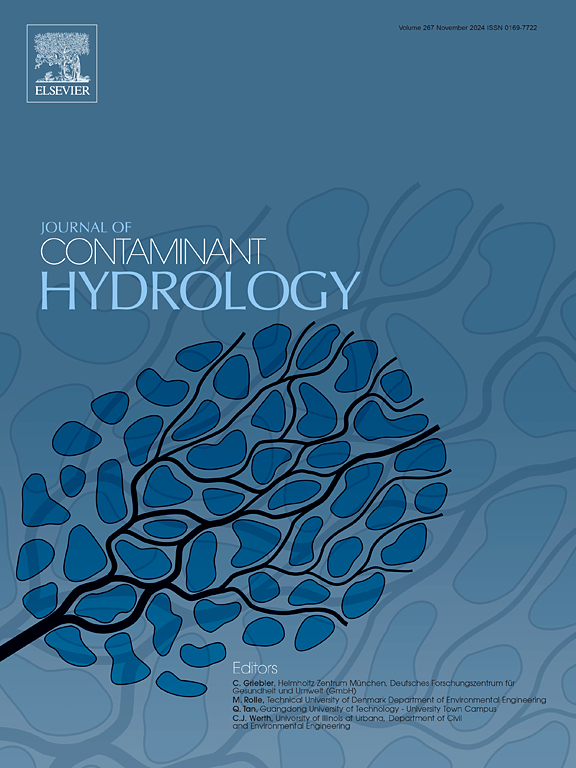Effects of karst conduit structure on breakthrough curves: Experiments and modeling
IF 3.5
3区 环境科学与生态学
Q2 ENVIRONMENTAL SCIENCES
引用次数: 0
Abstract
Due to the complexity of karst conduit systems, field tracer tests can produce a variety of breakthrough curves (BTCs) and present challenges in analyzing BTCs and determining solute transport pathways. In this study, tracer experiments were conducted in the laboratory using karst pipe structures such as asymmetric branch pipe and pool models to investigate the effect of karst conduit structure on BTC. Subsequently, experimental BTCs were simulated using the OM-MADE (One Dimensional Model of Multiple Adsorption, Diffusion, and Storage in Exchange Zones) model, and the results were compared with the experimental results. The results show that the main pipe in the branch pipe model significantly affects the number of BTC peaks, with increasing two-branch pipe spacing (DL) leading to a decrease in peak concentration and delaying peak time. In the pool model, increasing the pool volume or number leads to lower peak concentrations and stronger tailing effects. In the continuous pool model, the outlet location has the most significant influence on the BTC morphology. The OM-MADE model accurately simulates the bimodal and trailing features of the BTCs (R2 ≥ 0.9), demonstrating its reliability in predicting groundwater contamination. This study provides key insights that can help predict and manage groundwater contamination.

求助全文
约1分钟内获得全文
求助全文
来源期刊

Journal of contaminant hydrology
环境科学-地球科学综合
CiteScore
6.80
自引率
2.80%
发文量
129
审稿时长
68 days
期刊介绍:
The Journal of Contaminant Hydrology is an international journal publishing scientific articles pertaining to the contamination of subsurface water resources. Emphasis is placed on investigations of the physical, chemical, and biological processes influencing the behavior and fate of organic and inorganic contaminants in the unsaturated (vadose) and saturated (groundwater) zones, as well as at groundwater-surface water interfaces. The ecological impacts of contaminants transported both from and to aquifers are of interest. Articles on contamination of surface water only, without a link to groundwater, are out of the scope. Broad latitude is allowed in identifying contaminants of interest, and include legacy and emerging pollutants, nutrients, nanoparticles, pathogenic microorganisms (e.g., bacteria, viruses, protozoa), microplastics, and various constituents associated with energy production (e.g., methane, carbon dioxide, hydrogen sulfide).
The journal''s scope embraces a wide range of topics including: experimental investigations of contaminant sorption, diffusion, transformation, volatilization and transport in the surface and subsurface; characterization of soil and aquifer properties only as they influence contaminant behavior; development and testing of mathematical models of contaminant behaviour; innovative techniques for restoration of contaminated sites; development of new tools or techniques for monitoring the extent of soil and groundwater contamination; transformation of contaminants in the hyporheic zone; effects of contaminants traversing the hyporheic zone on surface water and groundwater ecosystems; subsurface carbon sequestration and/or turnover; and migration of fluids associated with energy production into groundwater.
 求助内容:
求助内容: 应助结果提醒方式:
应助结果提醒方式:


